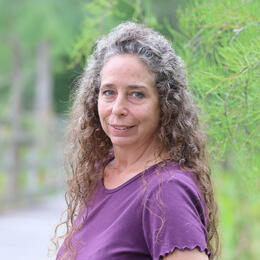Corkscrew Swamp Sanctuary’s boundary encompasses a mosaic of wetlands and other habitats. While ownership is the first step in land conservation and preservation, hands-on management is crucial in order to keep wetlands healthy and defend them against invasive plants and animals.
Water is the lifeblood of the Sanctuary and the conduit through which many invasive species travel. Several of the most aggressive invasive plants at the Sanctuary rely on water for seed dispersal, including Wright's nutrush, a.k.a. popcorn sedge (Scleria lacustris), West Indian marsh grass (Hymencachne amplexicaulis), and water hyacinth (Eichhornia crassipes). The mere presence of these invasive plants can mean trouble, and staff members conduct a rigorous regiment of prescribed fires, manual removal, and other methods to keep those populations in check.
Water can also pose a challenge to land managers, and swamp buggies and airboats act as crucial tools in this fight. These conveyances allow the team to reach invasive plants, remove nonnative apple snail eggs, and address other threats. Staff also rely on swamp buggies and airboats to access restoration monitoring photo sites, habitat mapping locations, and prescribed fire plots.
Thanks to tools like swamp buggies and airboats, Sanctuary staff can continue to manage invasive species to help recharge the natural systems fundamental to the quality of water in Southwest Florida, keeping Corkscrew Swamp a sacred sanctuary for wildlife and people.




